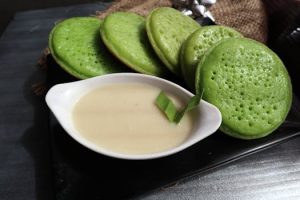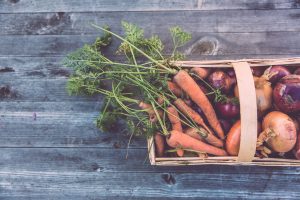Cooking for Plant-Based Diets Made Simple
Eating a plant-based diet has gained immense popularity in recent years due to its numerous health benefits and positive impact on the environment. However, for those who are new to this lifestyle, the idea of cooking meals without any animal products can be intimidating and seem like a daunting task. But fear not, cooking for plant-based diets can be made simple and enjoyable. With a little bit of planning, creativity, and knowledge, preparing delicious and nourishing meals can become effortless. In this article, we will explore the basics of cooking for plant-based diets, so you can confidently embark on this journey without feeling overwhelmed.
Understanding Plant-Based Diets
Before we dive into the cooking aspect, let’s first understand what a plant-based diet is. Simply put, a plant-based diet is centered around consuming whole, unprocessed plant foods such as fruits, vegetables, legumes, whole grains, nuts, and seeds. It minimizes or eliminates the consumption of animal products, including meat, dairy, and eggs. Plant-based diets can also include options like tofu, tempeh, and seitan as plant-based alternatives to meat. The beauty of a plant-based diet is that it allows for flexibility and can be tailored to individual preferences and needs.
The Benefits of Cooking for Plant-Based Diets
There are numerous benefits to adopting a plant-based diet, both for our health and the environment. Plant-based foods are rich in essential nutrients, vitamins, and minerals, which can help with weight management, reduce the risk of chronic diseases, and improve overall well-being. Cooking plant-based meals also means using less processed and artificial ingredients, resulting in cleaner and healthier meals. Moreover, by cutting down on animal product consumption, we can decrease our carbon footprint and contribute to a more sustainable planet.
Stock Up on Plant-Based Staples
Having a well-stocked pantry is the key to effortless cooking, especially when it comes to plant-based diets. Some essential pantry items to have on hand include whole grains like brown rice, oats, quinoa, and whole-grain pastas. Legumes such as lentils, chickpeas, beans, and tofu are also essential for providing a good source of protein and texture in meals. Nuts and seeds like almonds, cashews, sunflower seeds, and chia seeds can be used in various recipes for added nutrition. Lastly, having a variety of herbs, spices, and condiments like soy sauce, balsamic vinegar, and nutritional yeast can add a depth of flavor to your dishes.
Plan Your Meals
One of the keys to success in cooking for plant-based diets is meal planning. Taking the time to plan out your meals for the week will save you time, money, and stress. It also allows for creativity and variety in your meals. Start by selecting recipes that you are excited to try or stick with familiar dishes that can be easily modified to fit your dietary needs. Consider incorporating different flavors, textures, and cooking methods to keep your meals interesting. Preparing a large batch of meals and freezing them for later use is also a smart way to save time and ensure you always have a healthy meal option on hand.
Get Creative with Plant-Based Substitutions
One of the most common concerns when it comes to plant-based cooking is finding alternatives for animal-based ingredients. Fortunately, there are plenty of delicious and healthy options to substitute for meat, dairy, and eggs. Tofu, tempeh, and seitan can be used as a protein replacement in dishes like stir-fries, burgers, and curries. Plant-based milks like almond, coconut, or oat milk can be used in place of cow’s milk in recipes. Bananas, applesauce, or flaxseeds can be used as an egg substitute in baked goods. The possibilities are endless, so don’t be afraid to experiment and find what works best for you.
Incorporate Plant-Based Meals Gradually
Making the switch to a plant-based diet does not have to happen overnight. It’s essential to take it slow and listen to your body’s needs. Start by incorporating one or two plant-based meals into your weekly meal plan and gradually increase from there. This gradual transition will give your body time to adjust and ensure you are getting all the necessary nutrients. It will also allow you to find what plant-based meals you genuinely enjoy, making the transition more sustainable in the long run.
In Conclusion
Cooking for plant-based diets can be simplified by understanding the basics, stocking your pantry with essential items, and planning out your meals. It’s also important to get creative with substitutions and remember to take the transition at your own pace. With these simple tips, you can confidently embark on your plant-based journey and enjoy a wide variety of delicious and nourishing plant-based meals.










